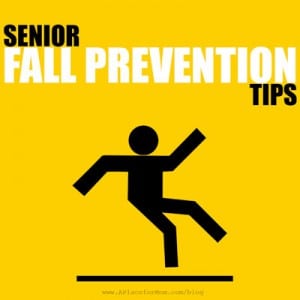A big deal is made about elderly individuals breaking bones – and reasonably so. Bone health is kind of important, given that you need your bones to stand and move around! In today’s Straight, No Chaser, we will address osteoporosis, the most common bone disease. Here are some frequently asked questions and answers.
What Is Osteoporosis?
Osteoporosis is a disease of your bones; the word literally translates into “porous bones.” It occurs when your body either loses too much or bone or makes too little bone (or both). By the way, it’s important to note that your bones are “alive,” constantly replacing old bone with new. The problem with osteoporosis is these flawed bones are more brittle, weak and prone to breaks in the spine, hips and wrists.
What are the Symptoms of Osteoporosis?
Osteoporosis typically does not have any symptoms until a bone breaks.
Who is at Risk for Osteoporosis?
Here’s a list. It is of note that only age, gender, ethnicity and family history are factors outside of your control.
- Age: The risk and rate of osteoporosis increase with age.
- Being too thin increases your risk.
- Gender: Women not only have smaller bones, but post-menopausal women lose bone quicker than men.
- Ethnicity: White and Asian women are most likely to get osteoporosis, although it is seen in all races an ethnicities.
- Excessive alcohol intake increases your risk.
- Family History
- Inactivity: Physical activity strengthens your bones just as it strengthens your muscles.
- Medicine: If you suffer from asthma, arthritis, cancer, endometriosis or seizures, ask your physician if the medicines you’re taking place you at risk for osteoporosis. Depending on your risk profile, other options may be available and better for you.
- Poor diet (especially lacking Calcium and Vitamin D) increases your risk.
- Smoking: It interferes with the body’s ability to use calcium, and it also speed up a woman’s onset of menopause, both of which are significant risks.
What can I do to reduce my risk?
Let’s keep this simple with five specific things under your control. Remember that osteoporosis involves levels, each of which further increases your risk of breaking a bone. Therefore regardless of your current situation, there’s value in taking steps to improve your bone health:
- Eat a well-balanced diet rich in calcium and vitamin D. Your food choices should include low-fat dairy products and foods and drinks with added calcium.
- Get plenty of physical activity. The best exercises for healthy bones are simple activities that promote strength-building and weight-bearing. Try to get 30 minutes of day in of walking, climbing stairs, lifting weights, and/or dancing.
- Live a healthy lifestyle. Don’t smoke and don’t drink alcohol in excess.
- Prevent falls. Check your home for dangers like loose rugs and poor lighting. Have your vision checked. Increase your balance and strength by walking every day and taking Tai Chi, yoga, or dancing classes.
- Talk to your doctor about your bone health. Go over your risk factors with your physician.
What are good sources of Vitamin D and Calcium?
Good sources of vitamin D
- Egg yolks
- Liver
- Milk with Vitamin D
- Saltwater fish
Sources of Calcium
- Tofu (calcium fortified)
- Soy milk (calcium fortified)
- Green leafy vegetables (e.g., broccoli, brussels sprouts, mustard greens, kale)
- Chinese cabbage or bok choy
- Beans/legumes
- Tortillas
- Sardines/salmon with edible bones
- Shrimp
- Orange juice (calcium fortified)
- Pizza
- Bread
- Nuts/almonds
- Dairy products (e.g., milk, cheese, yogurt)
Simply put, take care of your bones so they can safely take you where you need to go. Additional comments on treatment considerations can be found at www.sterlingmedicaladvice.com.
Feel free to ask your SMA expert consultant any questions you may have on this topic.
Order your copy of Dr. Sterling’s new book Behind The Curtain: A Peek at Life from within the ER at jeffreysterlingbooks.com, iTunes, Amazon, Barnes and Nobles and wherever books are sold.
Thanks for liking and following Straight, No Chaser! This public service provides a sample of what http://www.SterlingMedicalAdvice.com (SMA) and 844-SMA-TALK offers. Please share our page with your friends on WordPress, like us on Facebook @ SterlingMedicalAdvice.com and follow us on Twitter at @asksterlingmd.
Copyright © 2017 · Sterling Initiatives, LLC · Powered by WordPress









